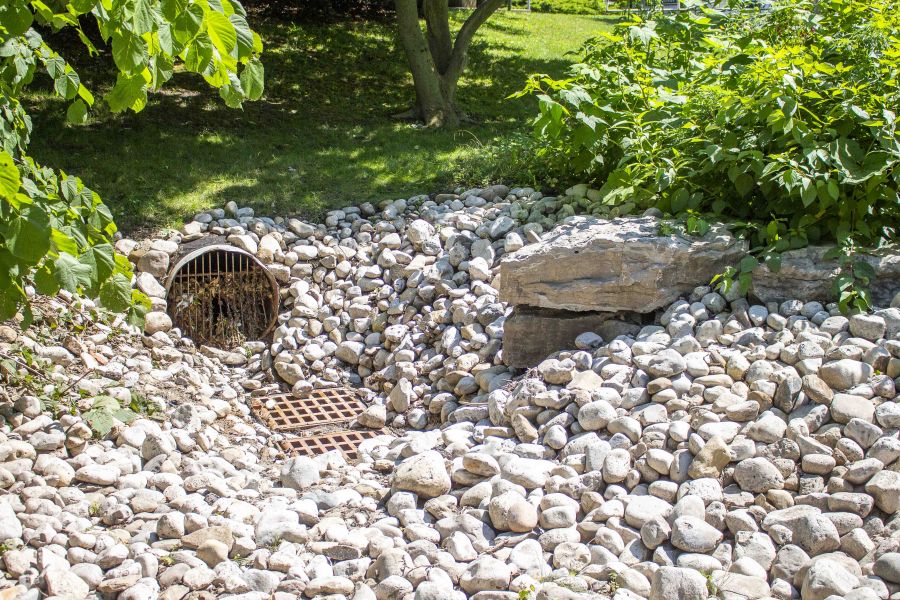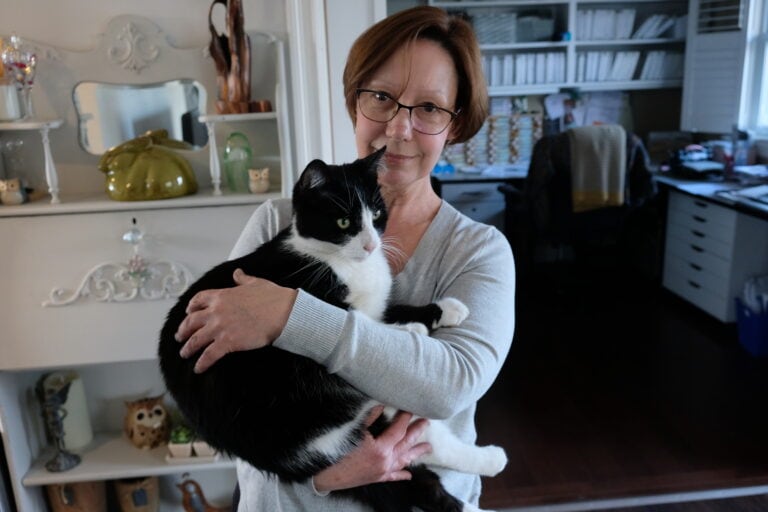The water at Queen's Royal beach in Niagara-on-the-Lake is significantly cleaner now than it was prior to 2017, water tests results show.
Tests show water is at acceptable bacteria levels much more often when compared to bacteria levels in 2017 and before that.
The change is due in part to remedial actions taken on by the Niagara Peninsula Conservation Authority and the Town of Niagara-on-the-Lake, officials say.
Over the last three years, leaks in sewers and storm drains have been fixed to control E. coli bacteria from the storm water drain that runs into the mouth of the Niagara River at Queen's Royal as part of the Niagara River Remedial Action Plan program.
Natalie Green, project manager for the program, said the evidence is clear that the water is cleaner as a result.
“Prior to 2017, the beach rarely met safe swimming guidelines. We were looking at maybe between 45 per cent of samples to 75 per cent of samples being able to be safe for swimming. Now it's consistently over 80 per cent,” she said.
While there are occasions when the water isn't safe for swimming, it's an overall average that's being looked at. As long as more than 80 per cent of tests come back within the safe range, the results are considered acceptable.
“Our target for the remedial action plan is that the levels of bacteria are below that guidelines for safe swimming at least 80 per cent of the time,” Green said.
At least twice in summer of 2020, in June and July, water tests showed high levels of E. coli bacteria.
However, overall, for the last three years, the beach has met the safe swimming target, Green said. In 2020, 90.5 per cent of tests met the safe-to-swim standard.
“We've been monitoring this site since the '90s probably and the last three years have been the best years, and it's because we've been doing a lot of different actions in the town to try to improve that water. We knew where particular sources (of bacteria) were and we were targeting them specifically.”
Some of the work included fixing storm and waste water sewers, which had been leaking and causing bacteria from human waste to enter the storm water sewers that drain at Queen's Royal Beach.
From 2010 to 2015 there were studies done to identify potential sources of bacteria entering the river. One of the sources identified was the storm drain at Queen's Royal Beach.
From 2017 to 2019, the town received $235,000 funding from the province and federal government to do a full investigation of the sewer catchment area of the storm sewers, “which shouldn't carry human sources of bacteria,” Green said.
The total cost of the remediation project was $998,285.
Storm sewers normally only carry runoff from the road and land, while sanitary sewers transport human waste.
She said the town identified a number of sources of bacteria entering the storm sewers. One of them was raccoons living in the sewer.
The town installed raccoon prevention grates to stop them from entering the sewer, “so that the raccoons couldn't get in there and have families and defacate in the sewer systems.”
The other problem was that broken sewer infrastructure was allowing bacteria from human waste to get into the storm sewers.
“The joints were offset where sometimes there were cracks in the pipes, so there was what's called infiltration. The yucky water was getting into the storm water,” Green said.
The town fixed those pipes and lined them to prevent the problem.
The biggest cause, though, Green said, was coming from down the road at Simcoe Park where three storm drains that collected water from elsewhere drained into the park.
“Those were major sources of bacteria, human bacteria, from issues in the storm system. And the solution there was to build, it's called the bioswale, it's like a mini water treatment plant in the park,” she said.
It collects the dirty water and after storms or when snow melts, “it all goes to a particular location that's been redesigned and engineered to capture that water, hold it back, let it filter out.”
“There's mulch and sand and gravel and native plants in that part of Simcoe Park, and it filters it out before then it goes to the next pipe, which then eventually leads to Queen's Royal Beach.”
She said the bioswale alone is 89 per cent effective at removing bacteria from the water.
“And monitoring again at those sites shows that there's no human sources any more of bacteria coming out of the storm outfall at Queen's Royal Beach. So we've dealt with all those issues.”
She said there are natural sources of bacteria in the water, such as animal waste and bacteria from disturbed sand, which means it will never be 100 per cent clean.
“The important part is that there's a target or a threshold to meet to make sure that it's safe. So if the bacteria is below a particular level, then it's safe for swimming, and the risk to human health is fairly low,” she said.
When the levels of bacteria are high, beaches are posted as unsafe to swim.
Green is excited about the remedial action – and the bioswale.
“It's a nature-based solution to a water quality problem, so we use native plants in that particular location that are good at tolerating water, and can be flooded with water every once in a while because when there's a lot of storm water it'll fill up. But there's different things flowering at different times, so not only does it help water, it helps be a food source for butterflies and for bees and for other insects in the area.”
The dirty water naturally seeps through the rock, mulch and the gravel, “and that cleans it,” she said.
The bioswale was built in spring of 2020 and was monitored all summer.
“Every time there was a rainfall event we would have people going out and sampling the water, going in, going out, to make sure that it was working.”
Monitoring the water in a fast-moving river current is also challenging, but Green says the conservation authority suspects the storm drain had been affecting the water quality more than sources coming from the river.
“The current in the river does move fairly quickly, but that's why we do monitoring three times a week,” she said.
Evidence suggests the remediation work has had a strong effect.
Green said there is some human waste bacteria coming from the Niagara River itself, from “upstream sources that we can't necessarily control within our program,” but that it's very low.
“There is always a low level in the background because wastewater treatment plants discharge to the river. There are other locations where that can happen but we know from our monitoring that those sources are very low and are not the main issue.”
The remedial work is part of a larger goal to protect the Niagara River and its ecosystem.
The Niagara River was listed in the 1980s as “one of many degraded Great Lakes locations,” she said.
“Degraded means historic pollution problems.”
“For the Niagara River the main issues were contaminants, historic forces of contaminants in the Niagara River, things like PCBs, that were produced locally and have now been banned, but are still lingering in the sediments, but mainly on the U.S. side,” she said.
“The loss of habitat is also a main issue for us that we're still working on. And then the water quality problems related to human sources of bacteria, which is what brings us back to the beach closings and those the beach postings that were happening in Niagara-on-the-Lake.”
Queen's Royal is the only public beach located on the Niagara River, Green said.
“A lot of people think Queen's Royal Beach is on Lake Ontario but it's actually part of the Niagara River.”











